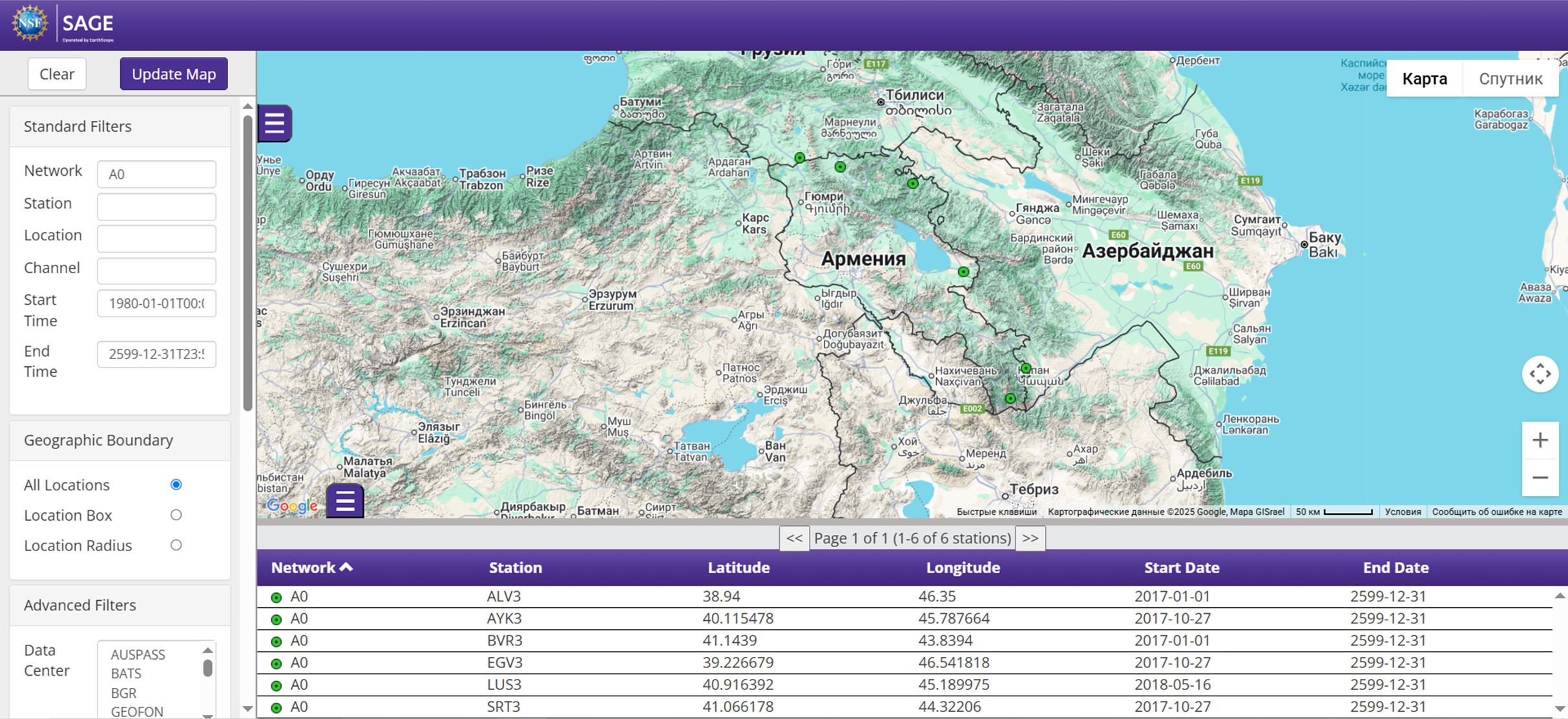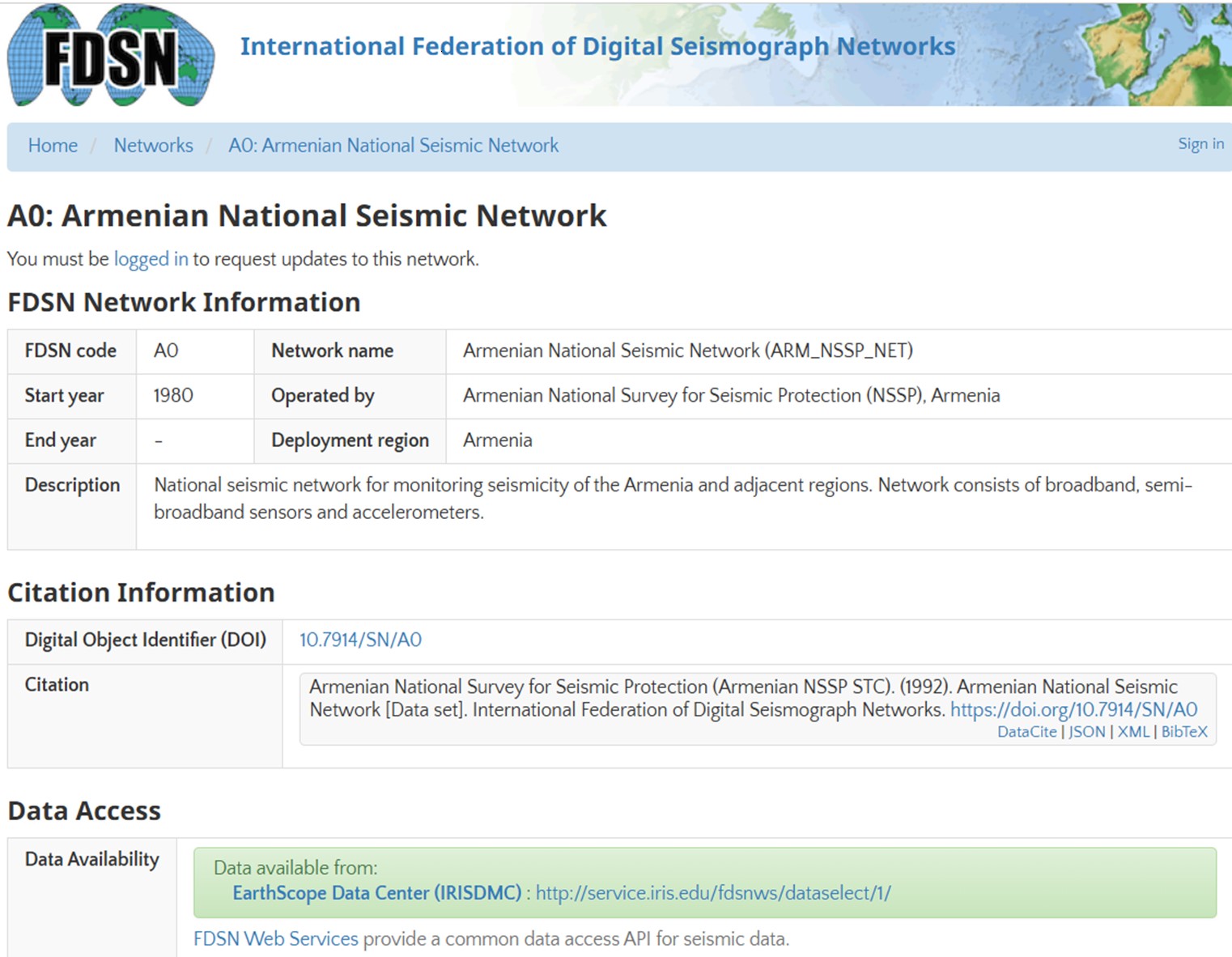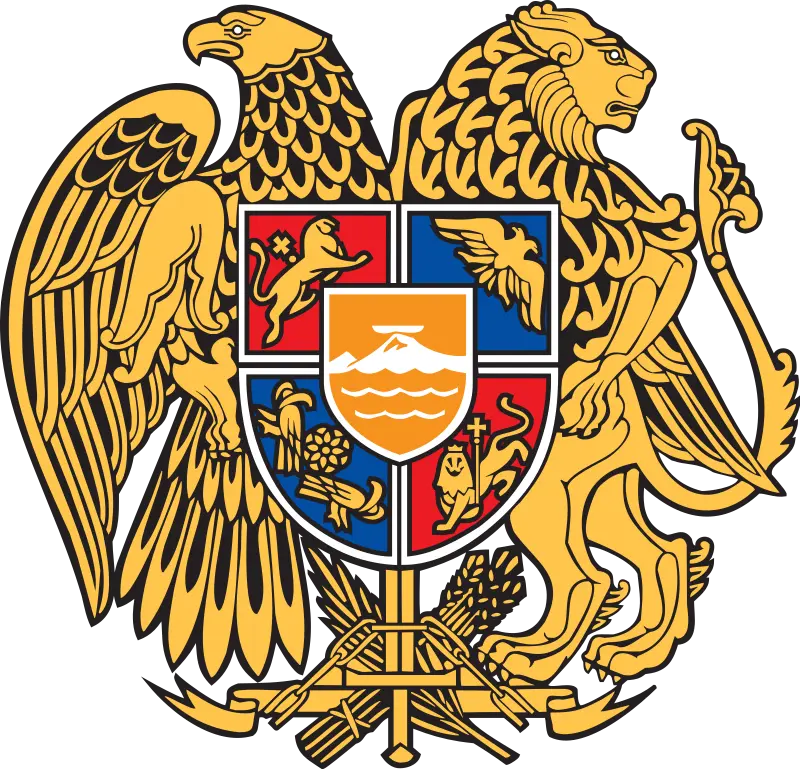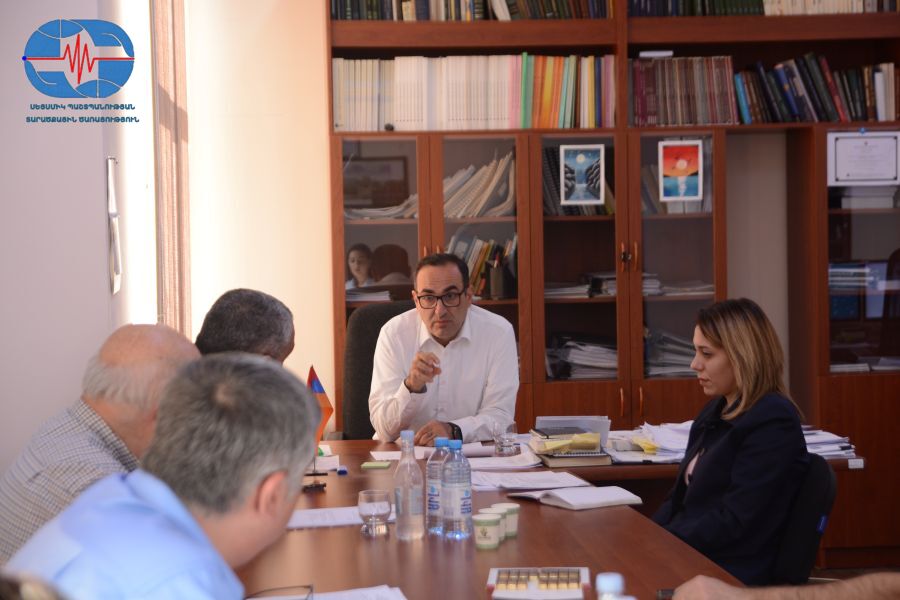
Armenia’s seismological network included in the international system
The International Federation of Digital Seismograph Networks (FDSN) is a global organization that unites institutions engaged in the deployment, maintenance, and data dissemination of broadband digital seismic stations at both national and international levels. The primary goal of the FDSN is to ensure a geographically well-distributed global network of seismic stations, thereby forming a unified worldwide observation system. The organization establishes common technical standards for instrumentation, data recording, and storage systems; promotes standardized formats for data archiving and exchange—particularly the Standard for the Exchange of Earthquake Data (SEED) format; and develops mechanisms for real-time data transmission, accessibility, and quality control of seismic recordings.
The FDSN operates under the auspices of the International Association of Seismology and Physics of the Earth’s Interior (IASPEI) and currently includes 93 member institutions from 63 countries. The central repository of FDSN data is located at the EarthScope Data Center (IRIS-DMC (Incorporated Research Institutions for Seismology- Data Managment Center), Seattle, USA), where seismic data contributed by all member institutions are stored and made freely accessible to the global scientific community, facilitating international cooperation and the advancement of Earth science and global seismic research.

Recently the Seismological Network of the Regional Survey for Seismic Protection of the Ministry of Internal Affairs of the Republic of Armenia has been included in FDSN platform as a full member and is listed in the official FDSN registry. It operates under the name “National Seismic Network of Armenia” and includes the following broadband seismic stations: ALV3 (Alvank), AYK3 (Ayrk), EGV3 (Yeghvard), BVR3 (Bavra), SRT3 (Saratovka), and LUS3 (Lusahovit). The national network of broadband seismological stations operated by the Regional Seismic Protection Service provides continuous monitoring and data collection of the country's seismic activity. The network structure is designed to record and analyze not only local earthquakes, but also regional and distant strong seismic events through high-quality digital recordings. These stations record the horizontal and vertical components of seismic waves, continuously transmit data to IRIS-DMC, and provide real-time access to seismic observations on international scientific platforms, contributing to the effectiveness of both national and global seismic monitoring systems.
The inclusion of the seismological network in the FDSN system provides a number of strategic and scientific advantages. At first, it guarantees international recognition and long-term preservation of seismic data: seismic data recorded by the RSSP are archived at the IRIS-DMC, having permanent DOI references and ensuring their accessibility to the global scientific community.

At the same time, membership contributes to global scientific integration, as Armenia's seismic observations become part of the global seismic database, increasing the country's scientific visibility and participation in international research initiatives. In addition, membership promotes technical and scientific cooperation, enabling the RSSP to use international standards and tools developed by the FDSN, including SEED, StationXML, and Web Services, as well as to get access to seismic databases from other countries. Finally, the integration ensures open access and sharing of data, as some of the RSSP broadband stations are connected to the SeedLink system, through which seismic records are transmitted in real time to the IRIS-DMC and CTBTO (Comprehensive Nuclear-Test-Ban Treaty Organization) global platforms, enabling simultaneous observations and world-class analysis.


